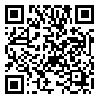Volume 16, Issue 4 (July & August 2025)
BCN 2025, 16(4): 737-750 |
Back to browse issues page
Download citation:
BibTeX | RIS | EndNote | Medlars | ProCite | Reference Manager | RefWorks
Send citation to:



BibTeX | RIS | EndNote | Medlars | ProCite | Reference Manager | RefWorks
Send citation to:
Ashtiyani M, Moradi Birgani P, Soleimani M, Jameie B, Shahrokhi A, Deevband M R et al . Short-term Therapeutic Effects of Antigravity Treadmill Training on Brain Activities and Walking Capacity in Children With Cerebral Palsy. BCN 2025; 16 (4) :737-750
URL: http://bcn.iums.ac.ir/article-1-2314-en.html
URL: http://bcn.iums.ac.ir/article-1-2314-en.html
Meghdad Ashtiyani1 

 , Parmida Moradi Birgani2
, Parmida Moradi Birgani2 

 , Maryam Soleimani3
, Maryam Soleimani3 

 , Behnam Jameie4
, Behnam Jameie4 

 , Amin Shahrokhi3
, Amin Shahrokhi3 
 , Mohammad Reze Deevband5
, Mohammad Reze Deevband5 
 , Mohammad Mehdi Mirbagheri *6
, Mohammad Mehdi Mirbagheri *6 




 , Parmida Moradi Birgani2
, Parmida Moradi Birgani2 

 , Maryam Soleimani3
, Maryam Soleimani3 

 , Behnam Jameie4
, Behnam Jameie4 

 , Amin Shahrokhi3
, Amin Shahrokhi3 
 , Mohammad Reze Deevband5
, Mohammad Reze Deevband5 
 , Mohammad Mehdi Mirbagheri *6
, Mohammad Mehdi Mirbagheri *6 


1- Department of Biomedical Engineering and Medical Physics, School of Medicine, Shahid Beheshti University of Medical Sciences, Tehran, Iran
2- Department of Medical Physics and Biomedical Engineering, Faculty of Medicine, Tehran University of Medical Sciences, Tehran, Iran.
3- Department of Basic Science, School of Rehabilitation Sciences, University of Social Welfare and Rehabilitation Sciences, Tehran, Iran.
4- Neuroscience Research Centre (NRC), Iran University of Medical Sciences, Tehran, Iran.
5- Department of Biomedical Engineering and Medical Physics, School of Medicine, Shahid Beheshti University of Medical Sciences, Tehran, Iran.
6- Department of Medical Physics and Biomedical Engineering, Faculty of Medicine, Tehran University of Medical Sciences, Tehran, Iran. & Department of Physical Medicine and Rehabilitation, Northwestern University Evanston, United States.
2- Department of Medical Physics and Biomedical Engineering, Faculty of Medicine, Tehran University of Medical Sciences, Tehran, Iran.
3- Department of Basic Science, School of Rehabilitation Sciences, University of Social Welfare and Rehabilitation Sciences, Tehran, Iran.
4- Neuroscience Research Centre (NRC), Iran University of Medical Sciences, Tehran, Iran.
5- Department of Biomedical Engineering and Medical Physics, School of Medicine, Shahid Beheshti University of Medical Sciences, Tehran, Iran.
6- Department of Medical Physics and Biomedical Engineering, Faculty of Medicine, Tehran University of Medical Sciences, Tehran, Iran. & Department of Physical Medicine and Rehabilitation, Northwestern University Evanston, United States.
Abstract:
Introduction: Cerebral palsy (CP) is one of the most common causes of motor disability in childhood. Since CP is a corollary of brain damage, persistent treatment should accompany alterations in brain functional activity in line with clinical improvements.
Methods: A total of 14 children with spastic hemiplegic CP were randomly divided into 2 groups. The training group (8.5 years) underwent 45 min anti-gravity treadmill training sessions 3 times/week for 8 weeks, while the control group (8.2 years) received the same amount of occupational therapy (OT). Functional magnetic resonance imaging (fMRI) was conducted to quantify brain activation during the performance of passive tasks, including ankle plantarflexion to dorsiflexion and knee flexion to extension over the range of motion. Walking capacity was assessed using the timed-up-and-go, 10-m, and 6-m walking tests. All evaluations were performed before and after training and compared between the two groups.
Results: This study could detect the signatures of ankle and knee passive movement tasks in the fMRI and characterize them in terms of activated voxels. The pre-post activation changes following the completion of the training course showed that the elicited motor cortex activation was greater for the ankle than the knee tasks. For the ankle, the primary motor cortex, precentral gyrus, and corpus callosum showed significant enhancement in most study participants. The results indicated 16.1% more active voxels in the study than control groups. Similarly, clinical outcome measures improved over twice as much in this group.
Conclusion: Anti-gravity treadmill training could be a potentially effective therapeutic intervention for improving gait and balance impairments in children with CP.
Methods: A total of 14 children with spastic hemiplegic CP were randomly divided into 2 groups. The training group (8.5 years) underwent 45 min anti-gravity treadmill training sessions 3 times/week for 8 weeks, while the control group (8.2 years) received the same amount of occupational therapy (OT). Functional magnetic resonance imaging (fMRI) was conducted to quantify brain activation during the performance of passive tasks, including ankle plantarflexion to dorsiflexion and knee flexion to extension over the range of motion. Walking capacity was assessed using the timed-up-and-go, 10-m, and 6-m walking tests. All evaluations were performed before and after training and compared between the two groups.
Results: This study could detect the signatures of ankle and knee passive movement tasks in the fMRI and characterize them in terms of activated voxels. The pre-post activation changes following the completion of the training course showed that the elicited motor cortex activation was greater for the ankle than the knee tasks. For the ankle, the primary motor cortex, precentral gyrus, and corpus callosum showed significant enhancement in most study participants. The results indicated 16.1% more active voxels in the study than control groups. Similarly, clinical outcome measures improved over twice as much in this group.
Conclusion: Anti-gravity treadmill training could be a potentially effective therapeutic intervention for improving gait and balance impairments in children with CP.
Keywords: Cerebral palsy (CP), Functional magnetic resonance imaging (fMRI), Anti-gravity treadmill, Gait
Type of Study: Original |
Subject:
Clinical Neuroscience
Received: 2021/10/9 | Accepted: 2022/01/3 | Published: 2025/07/1
Received: 2021/10/9 | Accepted: 2022/01/3 | Published: 2025/07/1
Send email to the article author
| Rights and permissions | |
 |
This work is licensed under a Creative Commons Attribution-NonCommercial 4.0 International License. |





